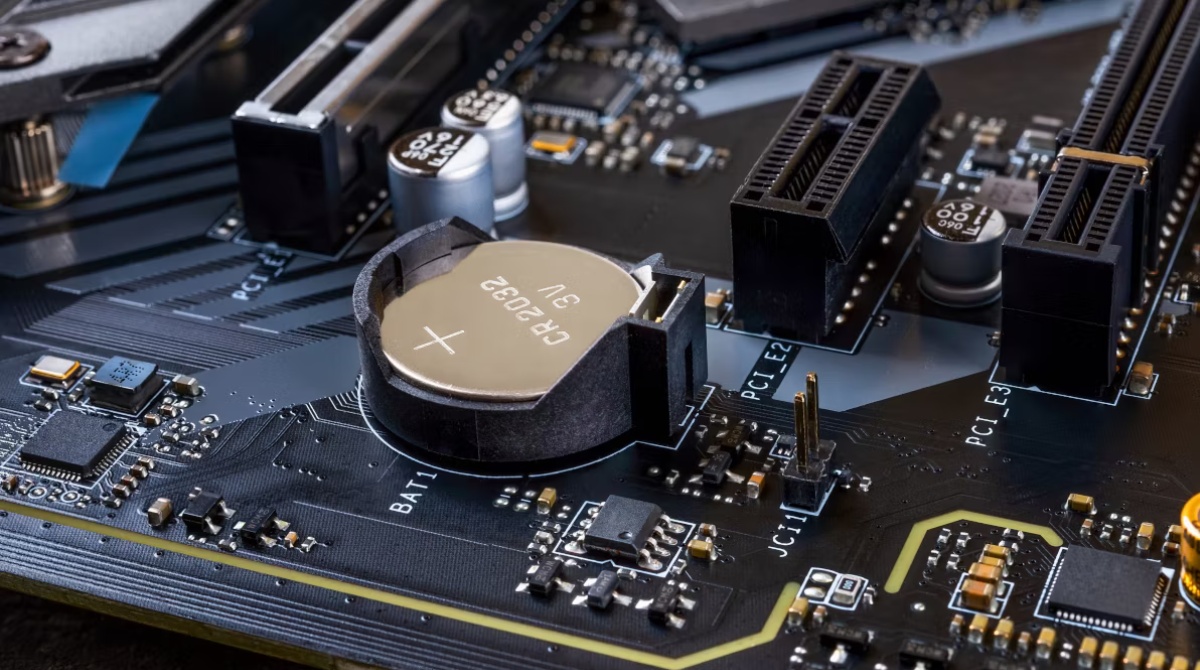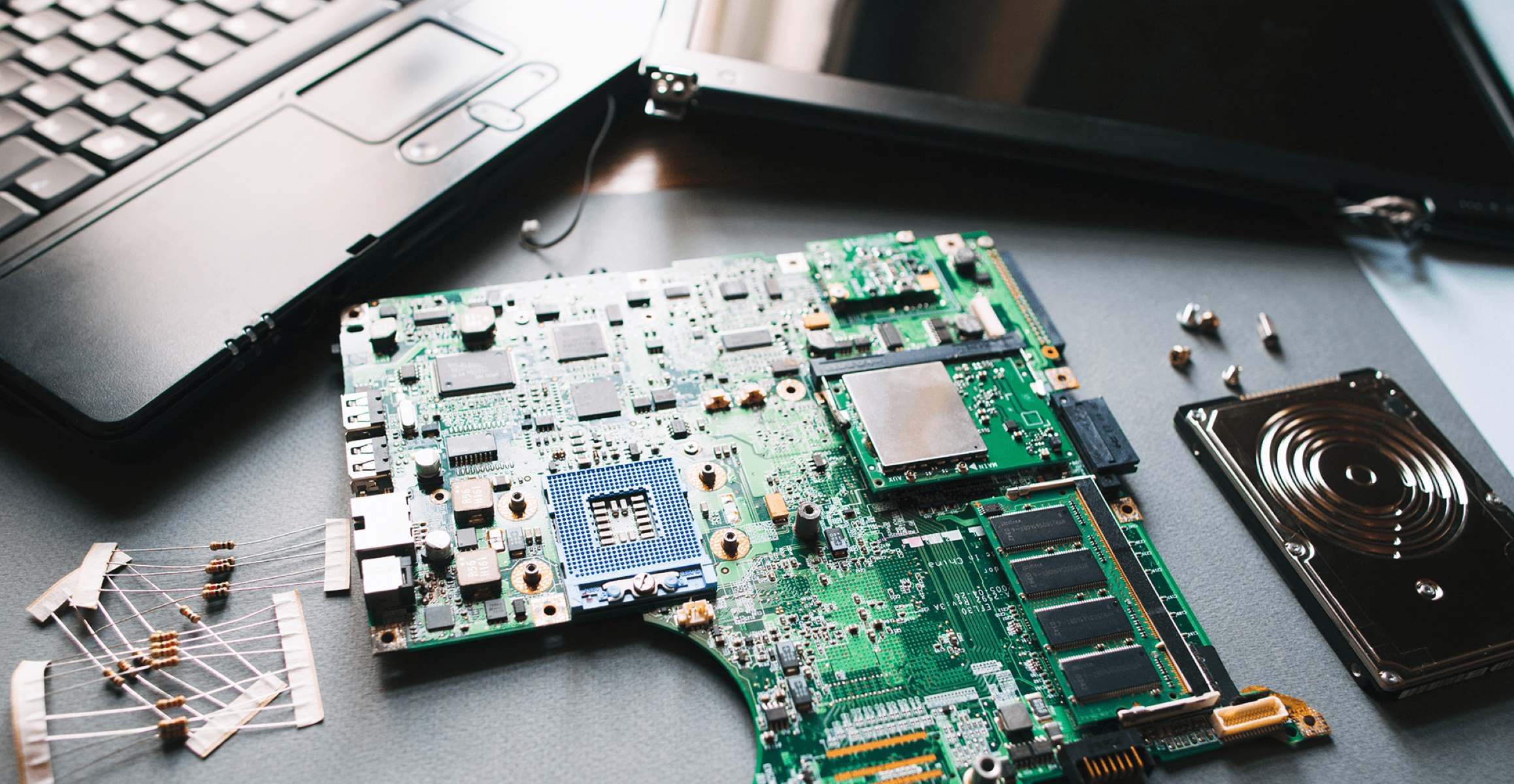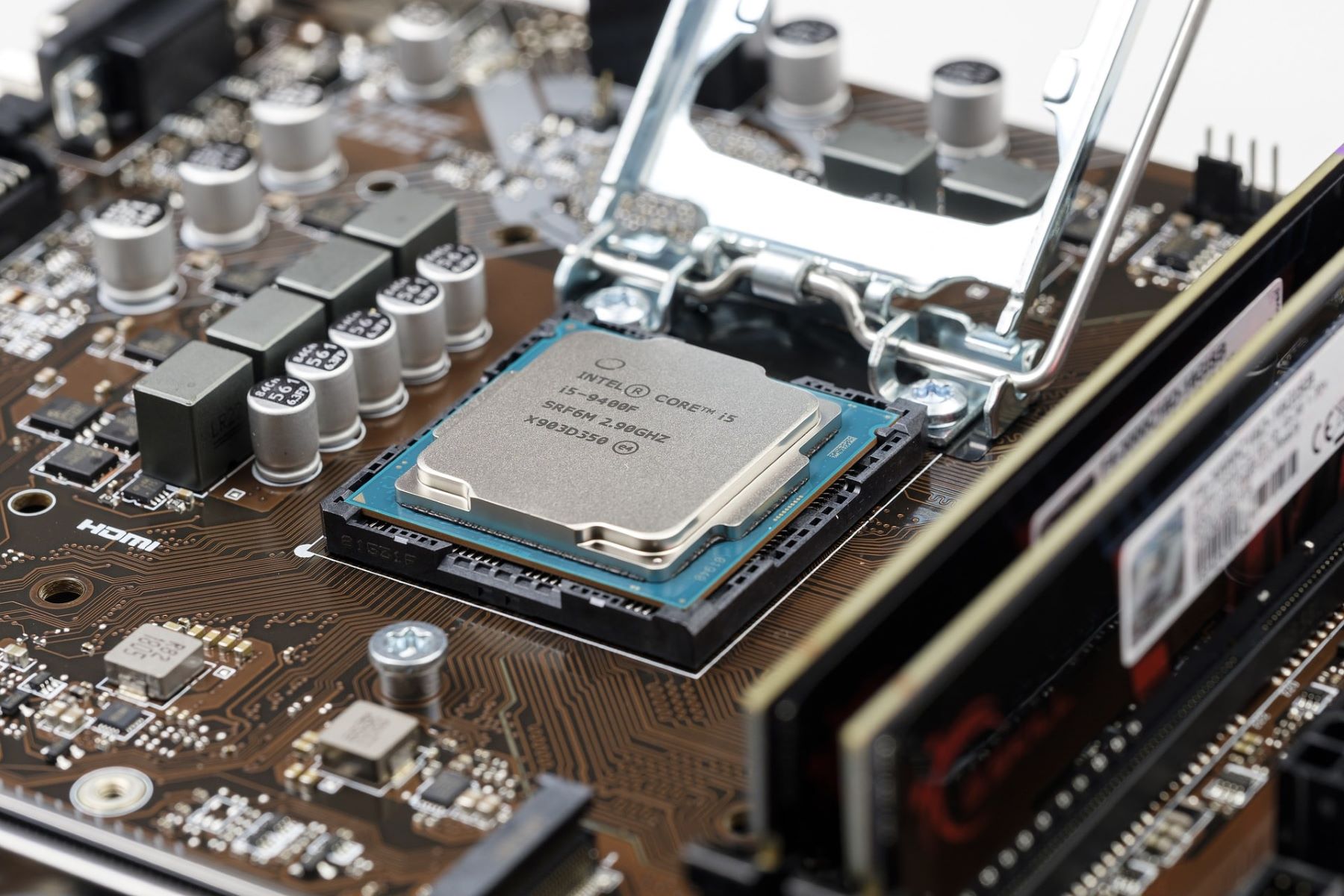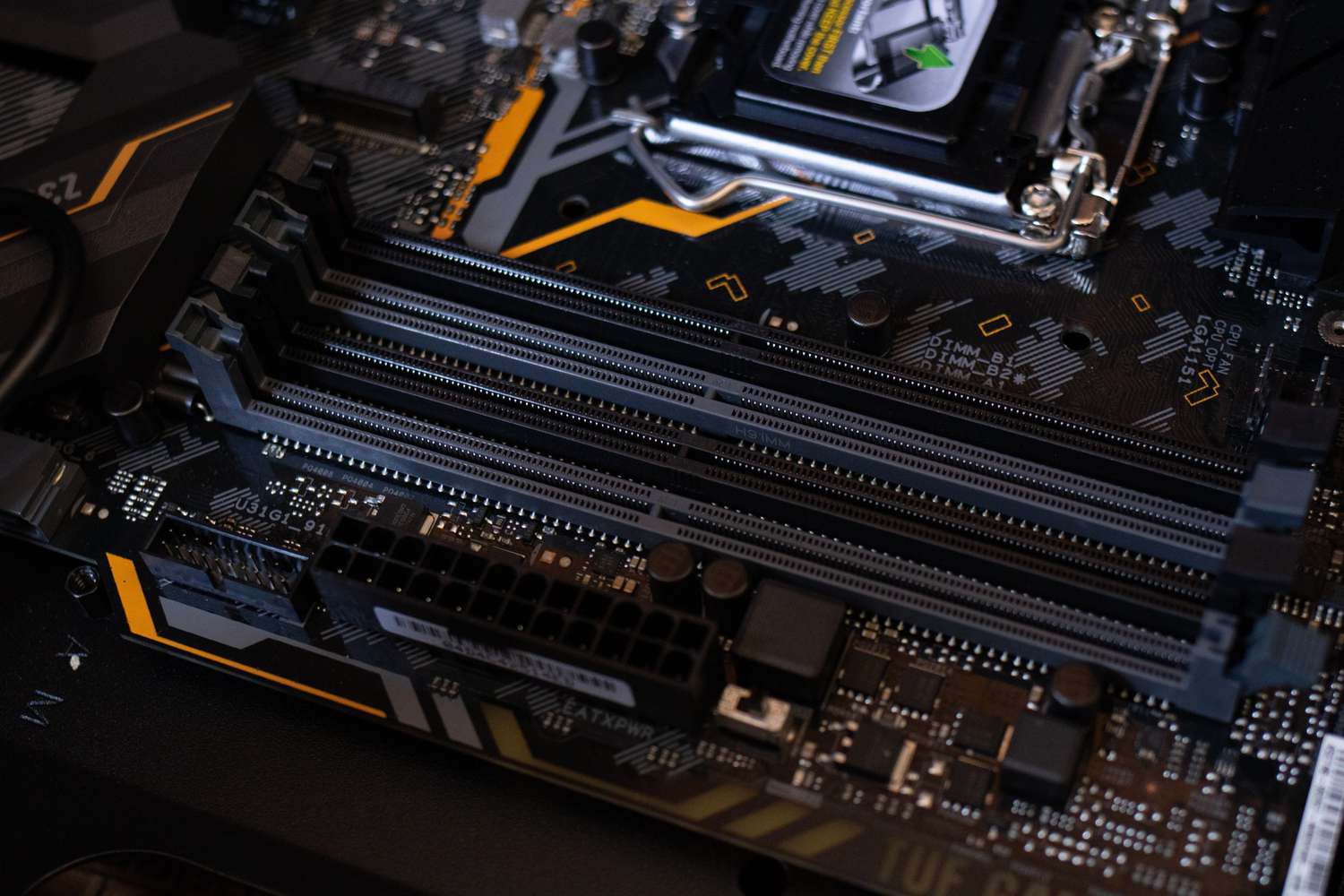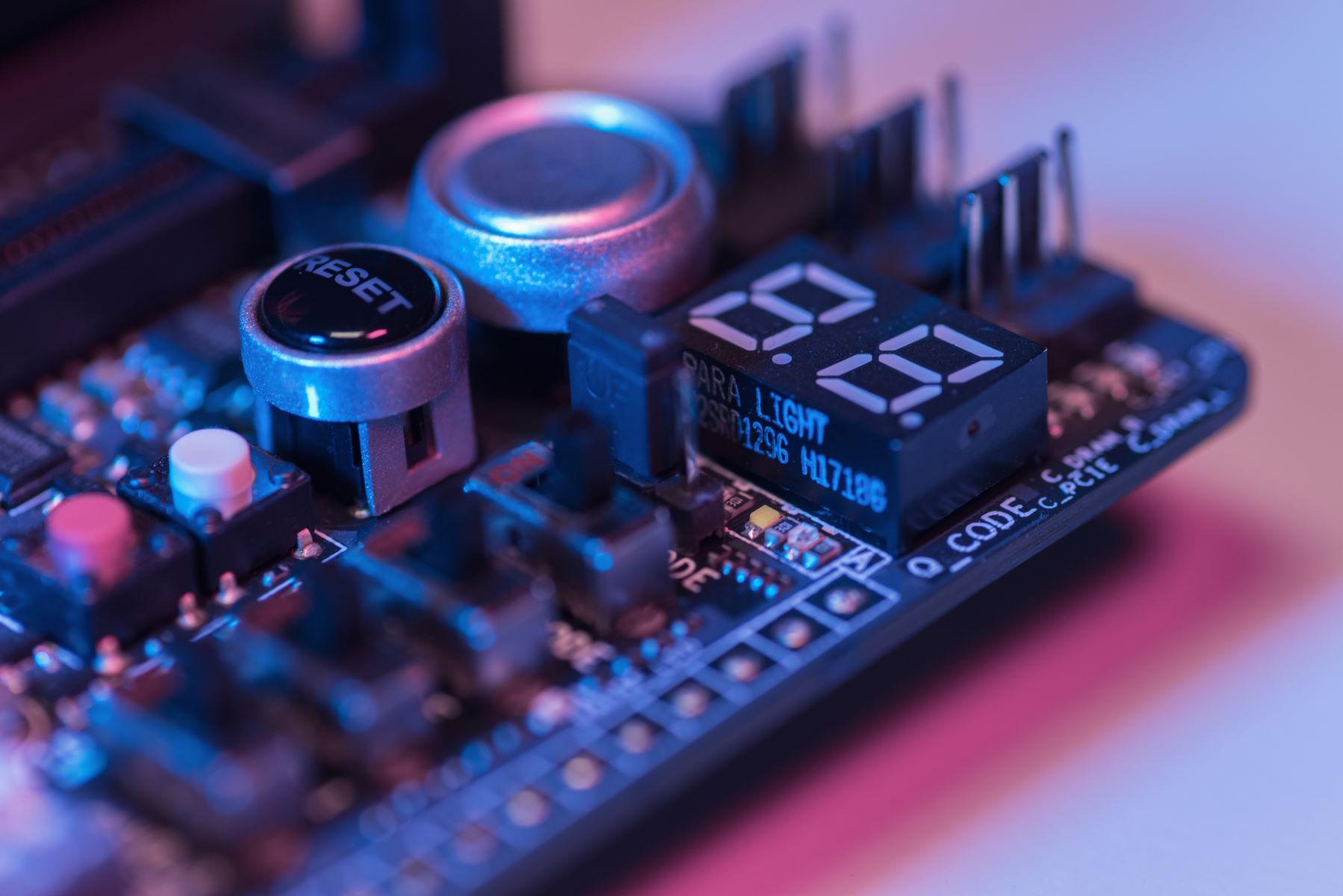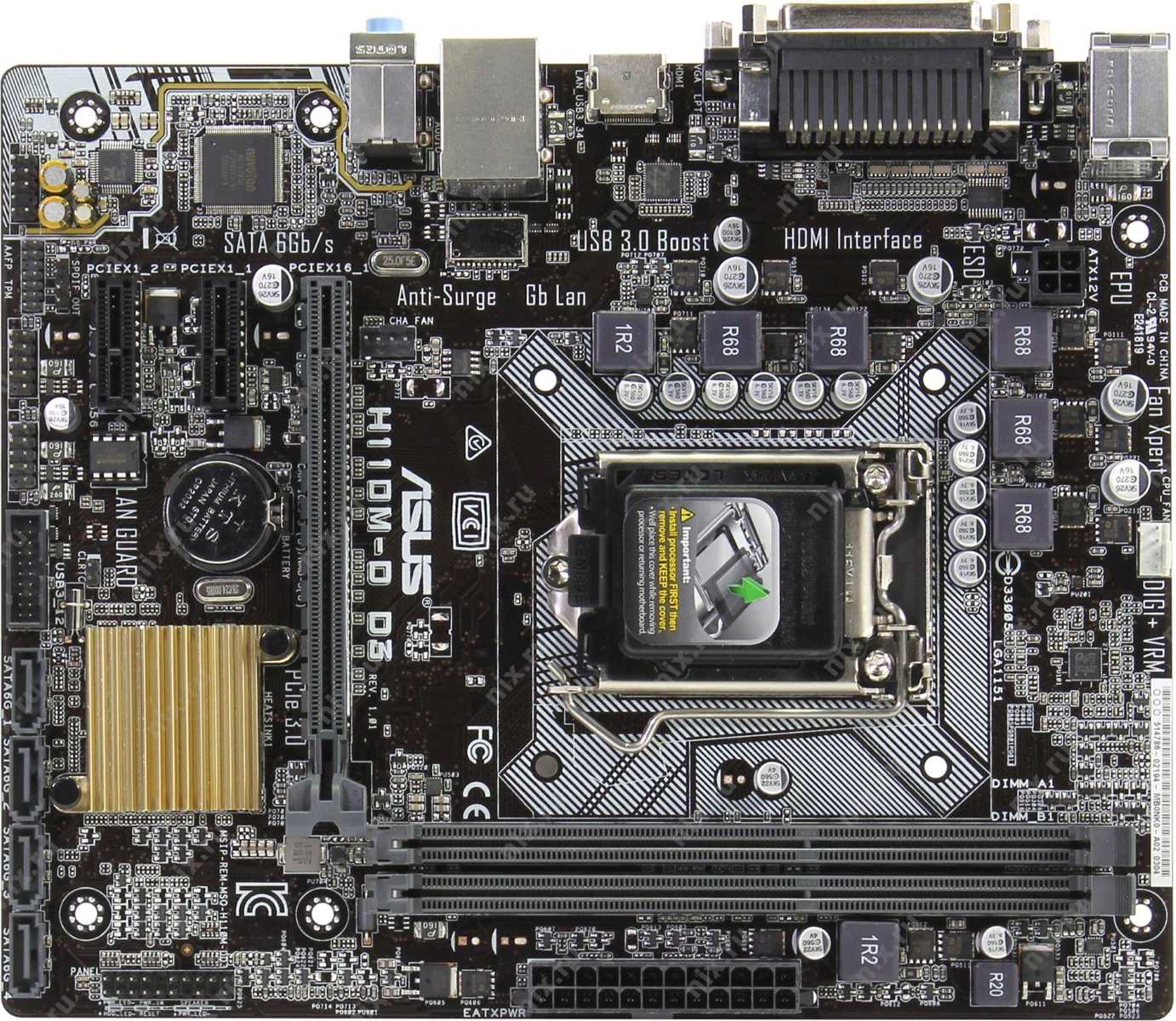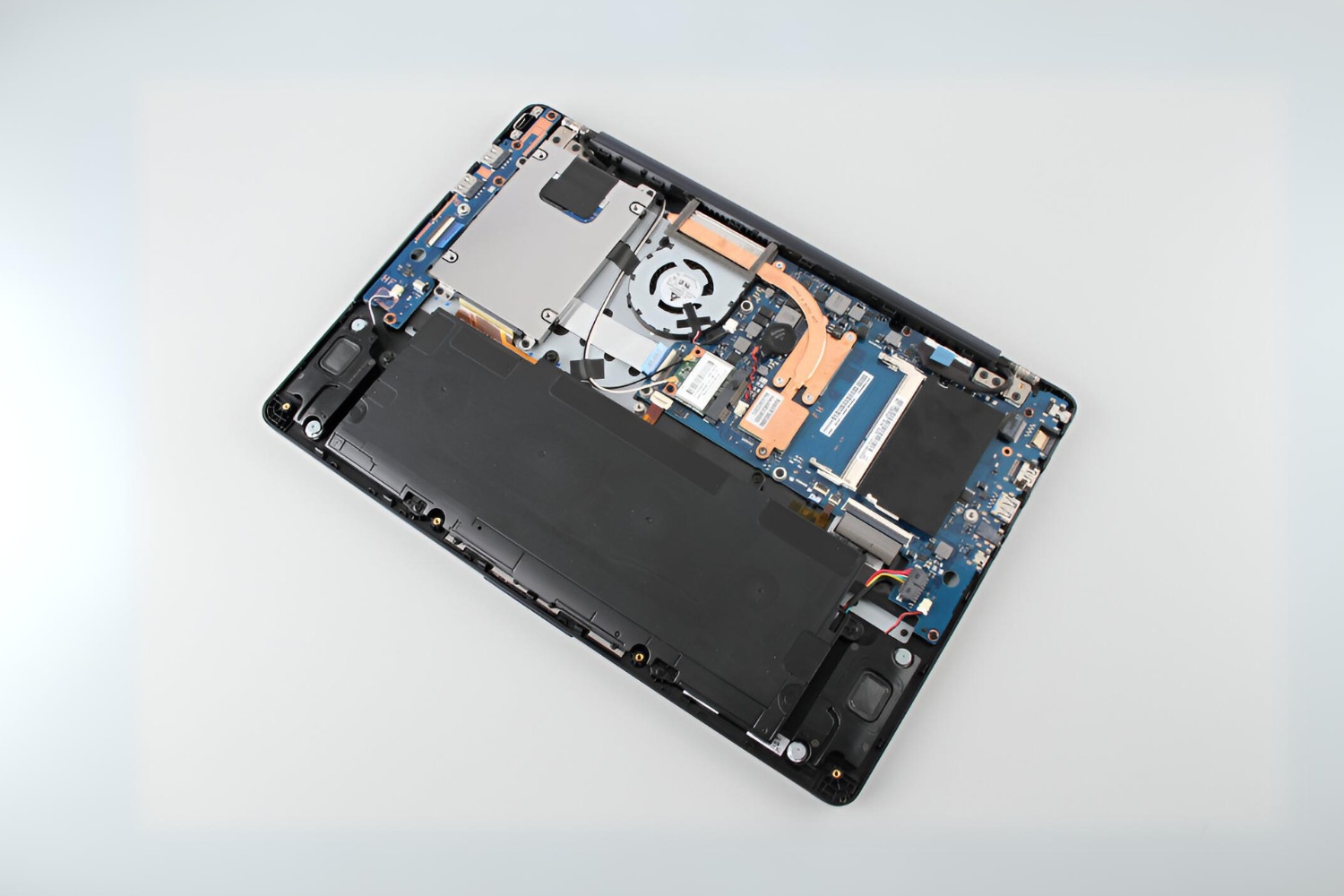Introduction
Welcome to the world of computer technology, where every component plays a crucial role in ensuring smooth functionality. One such component that holds significant importance is the CMOS RAM on a motherboard. While you may have heard of RAM (Random Access Memory) before, CMOS RAM may still be a foreign term to you. In this article, we will explore the purpose and significance of CMOS RAM in relation to a motherboard.
CMOS RAM, short for Complementary Metal-Oxide-Semiconductor Random Access Memory, is a small portion of the motherboard’s memory storage. It serves various essential functions, such as storing vital information like BIOS settings, system configuration, and even the current date and time. Despite its relatively small size, CMOS RAM plays a vital role in computer startups and maintaining system stability.
Understanding the components and significance of CMOS RAM will pave the way for better comprehension of its importance in a computer system. In the following sections, we will take a closer look at the structure of CMOS RAM, its power requirements, and the critical functions it performs.
What is CMOS RAM?
CMOS RAM, or Complementary Metal-Oxide-Semiconductor Random Access Memory, is a type of memory storage integrated into the motherboard of a computer. It is distinct from the main system RAM and serves a specific purpose in storing critical information necessary for the system’s operation.
The term “CMOS” refers to the technology used to create the memory cells, which are made up of metal-oxide-semiconductor transistors. These transistors ensure low power consumption and allow for data retention even when the system is powered off, making CMOS RAM ideal for storing essential system settings and configuration data.
CMOS RAM is typically a small portion of the main memory on the motherboard, typically ranging from a few kilobytes to a few kilobytes. It is accessed by the computer’s firmware, known as the Basic Input/Output System (BIOS), during startup and throughout the system’s operation.
The data stored in CMOS RAM is stored in binary format and is organized into specific memory locations or registers. These registers hold information such as BIOS settings, hardware configuration, date and time, and other critical system parameters.
Unlike main system RAM, which requires constant power supply to retain data, CMOS RAM uses a backup power source, usually a small battery known as the CMOS battery. This battery ensures that the CMOS RAM retains its data even when the computer is turned off or disconnected from a power source.
CMOS RAM can be accessed and modified by the user through the BIOS setup utility, which allows for customization of various system settings. These settings include boot priorities, hardware configurations, device settings, and other parameters that affect the system’s operation and performance.
In the next sections, we will delve further into the components of CMOS RAM, its importance in storing BIOS settings, retaining date and time, storing hardware configuration information, as well as the process of resetting CMOS RAM when necessary.
Components of CMOS RAM
CMOS RAM, as its name suggests, is composed of various components that work together to store and manage critical system data. Let’s take a closer look at the key components of CMOS RAM:
- Memory Cells: The memory cells are the fundamental units of CMOS RAM. These cells are made up of metal-oxide-semiconductor transistors that store a single bit of information. Each transistor represents a binary state, either 1 or 0, and the combination of these states allows for the storage of various types of data.
- Registers: Registers are specific memory locations within CMOS RAM that hold a specific type of data. For example, there may be registers dedicated to storing the system’s date and time, hardware configuration, and BIOS settings. The use of registers helps organize and manage the data stored in CMOS RAM.
- CMOS Battery: The CMOS battery is a small battery located on the motherboard that provides backup power to the CMOS RAM. It ensures that the data stored in CMOS RAM remains intact even when the computer is powered off or disconnected from a power source. The CMOS battery typically has a lifespan of several years and needs to be replaced when it becomes depleted.
- CMOS Controller: The CMOS controller is a specialized circuit that enables communication between the CMOS RAM and other system components, such as the BIOS. It controls the reading and writing of data to and from the CMOS RAM, ensuring proper access and management of the stored information.
- Power Supply: While CMOS RAM relies on the backup power provided by the CMOS battery, it also requires a primary power supply to be operational. This primary power supply is typically provided by the computer’s power source and ensures that the CMOS controller and other components of the motherboard receive the necessary power for proper functionality.
These components work together seamlessly to enable the storage and retrieval of critical system data in CMOS RAM. Understanding these components helps appreciate the importance of CMOS RAM in maintaining system settings, ensuring accurate timekeeping, and storing hardware configuration data. In the next sections, we will explore the significance of CMOS RAM in storing BIOS settings, retaining date and time, and storing hardware configuration information.
Why is CMOS RAM Important?
CMOS RAM may be a small component on a motherboard, but its importance cannot be understated. Here are some key reasons why CMOS RAM plays a vital role in computer systems:
Storing BIOS Settings: One of the primary functions of CMOS RAM is to store the Basic Input/Output System (BIOS) settings. The BIOS is firmware that initializes and configures various hardware components during the system’s startup. Storing these settings in the CMOS RAM ensures that they are retained even when the computer is powered off, allowing for consistent and reliable system configuration.
Retaining Date and Time: CMOS RAM also plays a crucial role in keeping track of the current date and time. This information is essential for various system operations, such as file creation, scheduling tasks, and maintaining accurate timestamps. The CMOS battery ensures that the date and time are continually updated, even in the absence of primary power, making it dependable for accurate timekeeping.
Storing Hardware Configuration Information: CMOS RAM stores critical hardware configuration information, such as the type and capacity of installed memory, the configuration of storage devices, and other system-specific settings. This information is vital for the computer to communicate and interact properly with various hardware components, ensuring optimal performance and compatibility.
System Stability and Booting: CMOS RAM contributes to system stability and smooth booting. During the startup process, the BIOS reads the settings stored in the CMOS RAM and configures the hardware accordingly. Any misconfigured or corrupted settings can lead to system errors, instability, and even failure to boot. By providing a stable and reliable storage medium for BIOS settings, CMOS RAM ensures a consistent and error-free startup process.
Customization and User Control: CMOS RAM allows users to customize and modify various system settings through the BIOS setup utility. This includes options for overclocking, adjusting fan speeds, setting boot priorities, and much more. The ability to tweak these settings directly impacts system performance, allowing users to optimize their computer for their specific needs and preferences.
Overall, CMOS RAM is an essential component of a computer system, enabling the storage and retrieval of critical information that determines the system’s behavior, performance, and stability. Without CMOS RAM, computers would lose their ability to maintain settings, keep accurate time, and properly interact with hardware components. In the next sections, we will explore how CMOS RAM is powered, the process of storing BIOS settings, retaining date and time, and storing hardware configuration information.
Powering the CMOS RAM
CMOS RAM, unlike main system RAM, does not rely on the continuous supply of power to retain the stored data. Instead, it utilizes a backup power source to ensure data persistence even when the computer is powered off. Let’s explore how CMOS RAM is powered and what keeps the data intact:
CMOS Battery: The primary power source for CMOS RAM is a small battery known as the CMOS battery. This battery is typically a round, coin-sized lithium battery located on the motherboard. It provides a low-level electrical charge to the CMOS RAM, ensuring that the stored data remains intact even in the absence of the primary power supply.
Backup Power Circuitry: The CMOS battery is connected to the CMOS RAM via backup power circuitry. This circuitry efficiently manages the flow of electricity between the battery and the CMOS RAM, ensuring a stable and consistent power supply. It regulates the voltage and current to prevent damage to the CMOS RAM while maintaining the necessary power levels for data retention.
Battery Lifespan: The CMOS battery has a limited lifespan, typically lasting several years. As the battery depletes over time, its ability to provide a reliable power supply diminishes. When the CMOS battery is nearing the end of its life, the CMOS RAM may begin to lose power, leading to the loss of BIOS settings, date and time, and hardware configuration information. To prevent this, it is advised to periodically check the CMOS battery’s status and replace it when necessary.
Battery Replacement: Replacing the CMOS battery is a relatively simple process. Most motherboards have a battery compartment that can be easily accessed by removing a small cover. Once the old battery is removed, a new battery of the same type can be inserted, ensuring that the positive and negative terminals are properly aligned. After replacing the battery, the CMOS RAM will once again have a reliable power source, preserving the stored data.
Overall, the CMOS battery plays a crucial role in powering the CMOS RAM and maintaining the data stored within it. Without the backup power provided by the CMOS battery, the CMOS RAM would lose its ability to retain BIOS settings, date and time, and hardware configuration information, leading to potential system instability and loss of critical system parameters. Understanding the importance of the CMOS battery emphasizes the necessity of regular battery checks and replacements to ensure the uninterrupted functioning of the CMOS RAM.
Storing BIOS Settings
One of the primary functions of CMOS RAM is to store the BIOS settings of a computer system. The BIOS, or Basic Input/Output System, is firmware that initializes and configures various hardware components during the system’s startup process. Let’s delve into how CMOS RAM retains and manages these essential settings:
Storage in CMOS RAM: When you make changes to the BIOS settings through the BIOS setup utility, such as adjusting boot priorities or enabling certain features, the updated settings are stored in the CMOS RAM. This allows the computer to remember these settings even when it is powered off or restarted, ensuring consistent system configuration.
Non-Volatile Memory: CMOS RAM utilizes a type of non-volatile memory, meaning that it retains data even without a continuous power supply. Unlike volatile memory, such as main system RAM, which requires constant power to maintain data integrity, CMOS RAM can retain information for an extended period, thanks to its low-power design and the backup power provided by the CMOS battery.
Accessing and Modifying Settings: The BIOS firmware has built-in instructions to read from and write to the CMOS RAM. During the system’s startup process, the BIOS retrieves the stored settings from the CMOS RAM to properly configure the hardware components. Additionally, users can access the BIOS setup utility to modify the settings stored in the CMOS RAM. This allows for customization and optimization of the system’s behavior and performance according to specific requirements.
Advantages of CMOS RAM Storage: Storing BIOS settings in CMOS RAM offers several advantages. First, it provides a reliable and persistent storage medium, ensuring that changes made to the BIOS settings are retained even during power cycles or system resets. This helps maintain consistency in system configuration and prevents the need to reconfigure the settings with each startup. Second, CMOS RAM allows for easy and user-friendly customization through the BIOS setup utility, granting users control over various aspects of the system’s behavior. Finally, CMOS RAM’s non-volatile nature makes it an ideal storage solution for BIOS settings as it ensures data integrity and longevity.
Overall, the CMOS RAM’s ability to store BIOS settings plays a crucial role in maintaining system configuration and ensuring consistent hardware initialization. Without this functionality, the computer would lose the ability to remember customized settings, leading to potential compatibility issues and diminished performance. The intimate connection between CMOS RAM and BIOS settings highlights the importance of this small yet vital component within the motherboard’s architecture.
Retaining Date and Time
Aside from storing BIOS settings, another important function of CMOS RAM is retaining the date and time information of a computer system. Accurate timekeeping is essential for various system operations, scheduling tasks, and maintaining chronological order in file creation and modification. Let’s explore how CMOS RAM ensures the accurate retention of date and time:
CMOS Battery Backup: CMOS RAM relies on a backup power source provided by the CMOS battery to retain the date and time information. Even when the computer is powered off, the CMOS battery supplies a small amount of power to the CMOS RAM, preventing the loss of stored data. This ensures that the system maintains the correct date and time when it is powered back on.
Real-Time Clock (RTC): The CMOS RAM contains a specific register known as the Real-Time Clock (RTC). This register is responsible for storing and updating the date and time information. The RTC operates independently of the computer’s operating system and continuously counts time by utilizing the power provided by the CMOS battery.
Hardware-Level Updates: The RTC within the CMOS RAM automatically ticks away the seconds, minutes, hours, days, months, and years based on the internal clock cycle. It handles leap years and time adjustments, ensuring accurate timekeeping for the computer system. This hardware-level update mechanism makes the date and time information reliable even during system power cycles or temporary power outages.
Software Time Synchronization: While CMOS RAM provides a reliable source for date and time storage, it may not always be the most accurate in the long term. To ensure precise timekeeping, computer systems often rely on software-based time synchronization services, such as Network Time Protocol (NTP), which sync with highly accurate time servers on the internet periodically. These software-based solutions adjust the system time based on the accurate time reference and compensate for any drift or discrepancies that may occur over time.
CMOS Battery Replacement: Over time, the CMOS battery may become depleted and lose its ability to power the CMOS RAM adequately. When this happens, the date and time storage may be affected, resulting in incorrect or inconsistent time display. To rectify this issue, the CMOS battery needs to be replaced with a new one, ensuring the proper functioning of the CMOS RAM and accurate timekeeping.
Overall, CMOS RAM’s ability to retain date and time information is crucial for system operations, scheduling tasks, and maintaining chronological order in file operations. The combination of the CMOS battery’s backup power and the Real-Time Clock within the CMOS RAM ensures accurate timekeeping and reliable date storage, even when the system is powered off. Understanding this functionality highlights the importance of CMOS RAM in maintaining one of the fundamental aspects of computer system operation.
Storing Hardware Configuration Information
In addition to storing BIOS settings and retaining date and time, CMOS RAM also plays a crucial role in storing hardware configuration information. This information includes details about the computer’s installed hardware components, such as memory modules, storage devices, and peripheral devices. Let’s delve into how CMOS RAM manages and utilizes hardware configuration data:
Identification of Hardware: When the computer starts up, the BIOS reads the hardware configuration information stored in the CMOS RAM. This allows the BIOS to identify the connected hardware components and initialize them appropriately. By having these hardware configuration details readily available, the BIOS can communicate effectively with each component, ensuring their proper functionality during system startup and operation.
Initialization Parameters: Storing hardware configuration information in CMOS RAM allows the BIOS to access specific initialization parameters for each component. These parameters include settings for bus speeds, memory timings, voltage levels, and device specifications. By providing these parameters during the startup process, CMOS RAM assists in overclocking, optimizing hardware performance, and ensuring compatibility between components.
Device Priority and Boot Options: CMOS RAM also stores information about the priority order of devices for booting. This includes the sequence in which the system should check for bootable devices, such as the primary hard drive, optical drives, USB devices, and network adapters. By specifying the boot options in the CMOS RAM, users can customize the startup process according to their preferences and requirements.
Plug and Play Configuration: CMOS RAM plays a vital role in the Plug and Play functionality of modern computer systems. When new devices are connected to the computer, the BIOS reads the CMOS RAM to determine the available resources and configuration settings. This allows the BIOS to allocate resources efficiently and avoid conflicts between different devices, providing a seamless and hassle-free device installation experience.
BIOS Updates and Hardware Changes: CMOS RAM storage of hardware configuration information allows for flexibility when updating the BIOS or making hardware changes. For example, when updating the BIOS, the new firmware may introduce additional features or optimized settings for certain hardware components. Storing this information in the CMOS RAM ensures that the updated settings are retained and utilized. Similarly, when hardware components are added, removed, or replaced, the CMOS RAM enables the BIOS to recognize and adapt to the changes without manual intervention.
System Recovery and Troubleshooting: CMOS RAM’s storage of hardware configuration information is valuable for system recovery and troubleshooting purposes. In the event of system malfunctions or conflicts, the BIOS can refer to the CMOS RAM to pinpoint potential hardware-related issues. The stored configuration details assist in diagnosing and resolving problems related to incompatible hardware, incorrect settings, or faulty connections.
Overall, CMOS RAM’s storage of hardware configuration information is vital for facilitating proper initialization, optimizing performance, and ensuring compatibility between components in a computer system. By retaining this critical data, CMOS RAM empowers the BIOS to efficiently manage the system’s hardware resources and provide a seamless user experience. Understanding the role of CMOS RAM in storing hardware configuration information highlights its significance in the overall functioning of a computer system.
Resetting the CMOS RAM
At times, it becomes necessary to reset the CMOS RAM to resolve certain issues or restore default settings. Resetting the CMOS RAM essentially clears all the data stored within it, including BIOS settings, hardware configuration information, and date and time. Let’s explore the process of resetting the CMOS RAM:
Clearing CMOS: The most common method to reset the CMOS RAM is by clearing the CMOS using the Clear CMOS jumper on the motherboard. This jumper is a small connector that bridges two pins on the motherboard. By moving the jumper from its default position to the clear position and then back, the CMOS RAM is effectively reset. This action resets all the stored data and brings the CMOS RAM back to its default state.
Removing CMOS Battery: An alternative method to reset the CMOS RAM is by removing the CMOS battery from the motherboard. By unplugging the computer from the power source and carefully removing the CMOS battery, the power supply to the CMOS RAM is interrupted. This causes the CMOS RAM to lose power and resets the stored data. After a few minutes, reinserting the CMOS battery restores power to the CMOS RAM, but with the data cleared.
Clearing CMOS via Software: Some motherboards also provide the option to clear the CMOS using specific software utilities provided by the manufacturer. These utilities typically run within the operating system and offer a user-friendly way to reset the CMOS without physically manipulating the motherboard. It is essential to refer to the motherboard’s documentation or manufacturer’s website for instructions on how to use these software utilities correctly.
Reasons to Reset CMOS: There are several scenarios where resetting the CMOS RAM may be necessary. For example, if the computer is experiencing compatibility issues with newly installed hardware, clearing the CMOS can help resolve conflicts by restoring default settings. Additionally, if the computer fails to boot or exhibits abnormal behavior after modifying BIOS settings, resetting the CMOS can bring the system back to a stable state. It is worth noting that resetting the CMOS RAM should be the last resort and should only be performed if other troubleshooting steps have been exhausted.
Consequences of Resetting CMOS: It is important to be aware that resetting the CMOS RAM erases all the data stored within it, including customized settings and configurations. After resetting, the BIOS will revert to its default settings, and any changes made to BIOS settings, date and time, or hardware configurations will be lost. Therefore, it is crucial to ensure that you have a backup of any important information or customized settings before performing a CMOS reset.
Resetting the CMOS RAM can be an effective solution to resolve certain issues and restore the system to a stable state. However, it is essential to exercise caution and understand the potential consequences of a CMOS reset. By following the appropriate procedures and considering the risks, users can effectively reset the CMOS RAM when necessary and ensure the proper functioning of their computer system.
Conclusion
CMOS RAM, an integral part of a computer motherboard, serves various important functions that contribute to the overall functionality and stability of the system. With its ability to store BIOS settings, retain date and time information, and store hardware configuration data, CMOS RAM plays a critical role in ensuring proper system initialization, personalized customization, and accurate timekeeping. By utilizing a backup power source, typically in the form of a CMOS battery, CMOS RAM can retain data even when the computer is powered off. This non-volatile memory allows for the persistence of BIOS settings and critical system information, enabling smooth booting, optimal hardware performance, and user control over system behavior.
The components of CMOS RAM, including memory cells, registers, CMOS battery, CMOS controller, and power supply, work together to store and manage the stored data effectively. CMOS RAM’s ability to retain BIOS settings allows for consistent system configuration across power cycles or restarts, while accurate timekeeping ensures synchronization with external devices and proper recordkeeping. Additionally, the storage of hardware configuration information in CMOS RAM facilitates efficient hardware initialization, plug-and-play functionality, and customization options for user preferences.
As with any technology, it is crucial to be aware of the need to periodically check and replace the CMOS battery to ensure uninterrupted power supply to the CMOS RAM. Furthermore, in situations where issues arise or default settings need to be restored, the CMOS RAM can be reset, either through hardware manipulation or software utilities.
In conclusion, CMOS RAM is a vital component of a computer system that stores essential information and settings. Its role in retaining BIOS settings, date and time, and hardware configuration data contributes to seamless system operation, personalized customization, and accurate timekeeping. Understanding the purpose and functions of CMOS RAM allows for a better appreciation of its role in modern computing and empowers users to make informed decisions when troubleshooting, customizing, or maintaining their computer systems.







